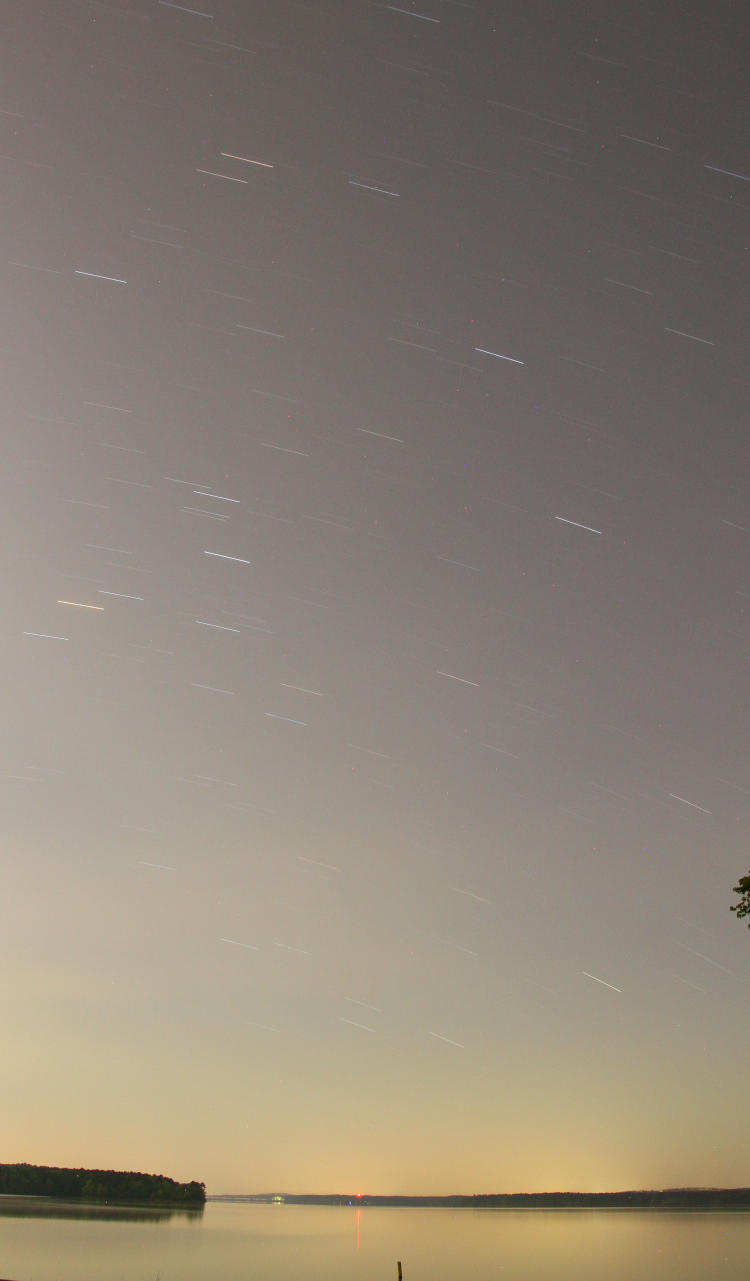Just letting you know that the Eta Aquariids meteor shower is due to peak on the night/morning of the 5th/6th, though it’s going on right now, since we’re passing through the dust trail left by Hailey’s comet on its passes around the sun – that’s what most meteor showers are, and why we can schedule them. As the Earth trundles around in its orbit, it crosses the paths that many comets have taken in their own orbits, and despite the fact that they look like they’re spewing stuff away at some inordinate rate, enough of their debris remains in its own orbit, littering space in the immediate vicinity like fishermen dropping beer bottles. When such debris (the comet dust) gets close enough, Earth’s gravity pulls it in and it hurtles through our atmosphere so fast that the air glows (that’s actually what you’re seeing, not the meteor itself.)
This year’s Eta Aquariids, unlike the Lyrids last month, will occur with dark skies, since the moon is a thin crescent those days that sets not long after the sun does. However, the radiant will be rising late – about 3 AM on the morning of the 6th – so many of the meteors will remain out of sight below the horizon, for northern hemisphere observers; it’s actually supposed to be a much better show from the southern hemisphere. However, if you want to give it a shot, your best observation direction is likely east until about 3 AM, when Saturn rises – the radiant is within the ‘water jug’ of Aquarius off to the left of Saturn. At that point, follow Aquarius across the sky.
However, don’t feel the need to be specific. Meteor showers may throw down from any direction, and in my experience, the best trails have not been from the radiants – but there isn’t a dependable direction to aim in, and the greater number have been from around the radiants, just tending towards the quick, ‘blink and you’ll miss it’ type. Secondly, you’ll want a wider angle anyway to capture as much as possible, so your field of view may take in a significant portion of the sky, and aiming towards the horizon as Aquarius rises may only fill the frame with light pollution, while the darkest portion of sky will increase your odds of seeing something.
I did indeed make an attempt on last month’s Lyrids, but I got out too late and the moon had already risen, so though it remained behind the trees from my vantage, it was lighting up the humidity in the sky.

In all my time spent observing, I saw one meteor, naturally not where the camera would catch it, and my handful of exposures showed bupkiss. This was directly opposite the moon, not at all towards the radiant but the darkest sky in my vicinity, and you can see the moonlight is reaching the trees already. I should have been out earlier, but believe it or not, I was busy before then despite the late hour – I tend to do a lot of my work at night, especially that on the computer or my workdesk.

Both of these were ten-minute exposures, and you can see how badly the humidity and moonlight (and light pollution) was affecting this one – this was 120-140° from the one above, within 60° of the moon off to the left. Hardly the best view, but had I caught a major fireball with its reflection in the lake, I would have been ecstatic. Maybe in a few nights I’ll double down, get out the old 30D and a second tripod, and shoot in two directions simultaneously. Dammit, one of these days I’ll snag a wicked bolide trail, and justify all of my attempts.




















































